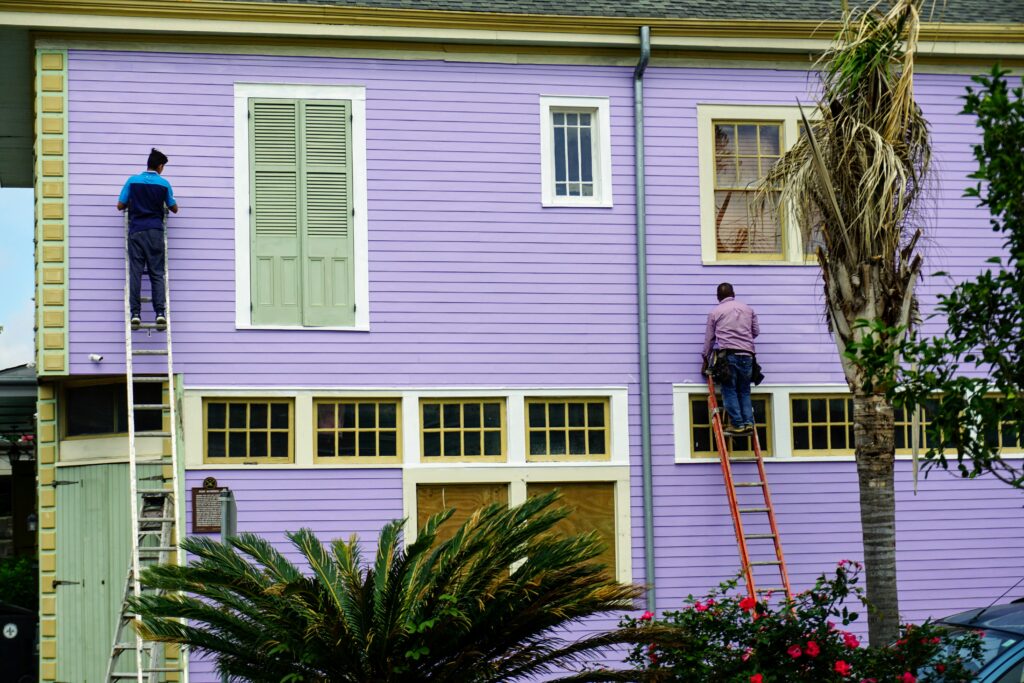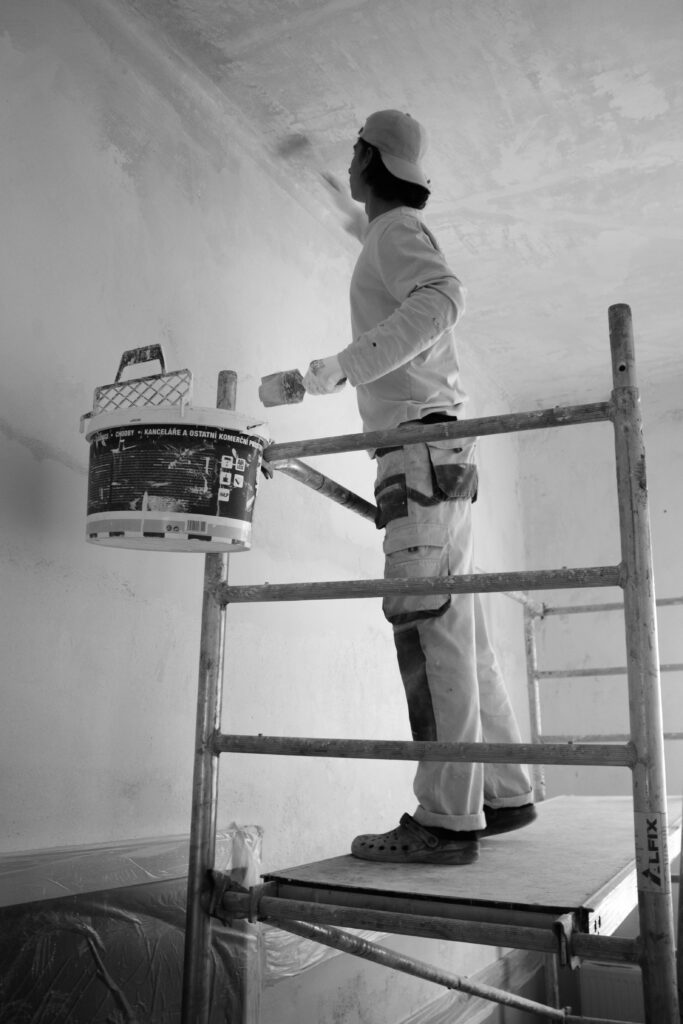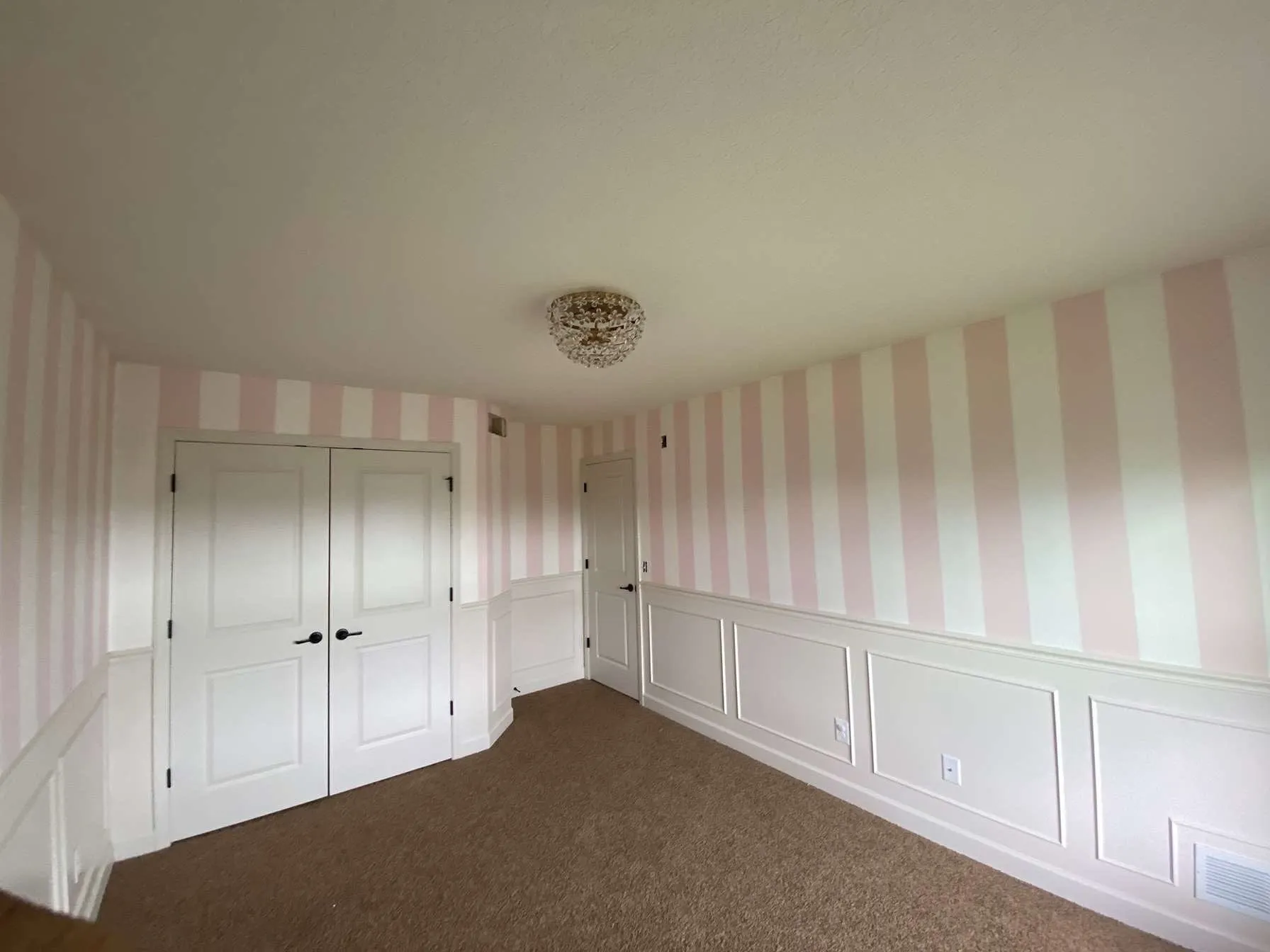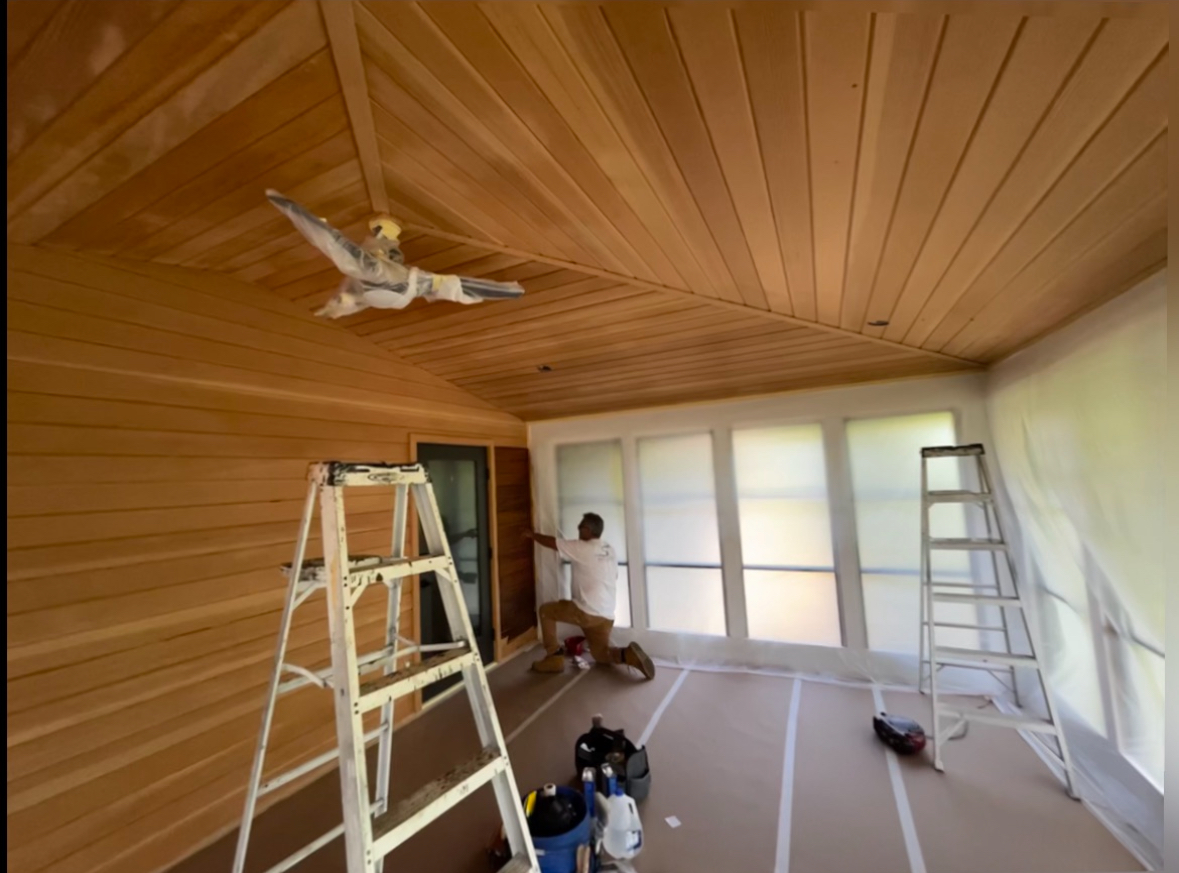Steps To Find Home Painting Contractors Near Me
Choosing the right home painting contractor can transform your space—or leave you with peeling walls and wasted money. The difference lies in how carefully you plan before you sign a contract.
That is why having a step-by-step checklist is the smartest way to approach the search. Whether you need a fresh coat inside your living room, a durable finish for your home’s exterior, or even large-scale help from commercial painting contractors, the process is surprisingly similar.
Let’s walk through it in detail.
Why Hiring Professional Home Painting Contractors Near Me Matters
A DIY weekend project may sound appealing. But when it comes to lasting results, hiring professional home painting contractors is almost always the better investment.
Professional painters bring expertise, skill, and reliability to every project, ensuring high-quality work and peace of mind.
Here is why: Choosing a local painting company also means you benefit from their understanding of local conditions and personalized service tailored to your community.
- Quality Results vs. DIY: A licensed painter knows how to prep surfaces, repair wall damage or imperfections such as cracks or chipped paint, apply even coats, and deliver a professional finish. DIY often leaves brush strokes, uneven tones, or flaking.
- Time and Cost Savings: Professionals work faster and avoid costly mistakes. A botched DIY job often means spending double to fix it later.
- Durability: Whether it is a living room wall or siding outside, professional finishes last longer.
- Specialized Benefits: For example, exterior home painting contractors use weather-resistant materials and techniques that protect your house from rain, sun, and temperature swings.
When you see how long the finish lasts—and how polished it looks—you will realize why professionals are worth every penny.
Step-by-Step Checklist for Finding the Best Home Painting Contractors Near You
Here’s the exact checklist to follow so you hire with confidence.

- Research contractor credentials and reviews.
- Verify licenses and insurance.
- Ask for references and check past work.
- Get detailed written estimates.
- Compare timelines and payment schedules.
- Request a free consultation from potential contractors to discuss your project and get expert recommendations.
Step 1: Search “Home Painting Contractors Near Me”
Start with the basics: search for home painting contractors near me online. Local results matter because nearby contractors understand climate, housing styles, and regional paint preferences.
Many of these businesses are independently owned and operated, serving the local community and building trust with both residential and commercial clients.
Look for:
- Reviews on Google, Yelp, or Houzz.
- Testimonials on local forums and social media.
- Websites that show before-and-after galleries.
- A contractor’s website page or directory where you can find more information about their services.
- Check if the contractor is licensed and insured.
Keep an eye out for new home painting contractors that may offer competitive pricing but ensure they have credentials. Searching widely also helps you compare paint contractors and painting contractor services in your area.
Step 2: Verify Licensing and Insurance
Never skip this. Any legitimate home painting contractor must carry:
- License: Ensures they meet state or local requirements.
- Insurance: Protects you from liability if accidents occur.
Ask to see documents. Call the licensing authority if unsure. Always ask key questions about licensing, insurance, and credentials to ensure the contractor is legitimate. Also, ask if the painters are background checked for added peace of mind. If a painter avoids the question, consider it a red flag.
Step 3: Ask About Experience and Specialization
Not every contractor fits every project. You need to match skills with your needs.
- Interior vs. Exterior: Some focus on interiors, while others are seasoned home exterior painting contractors.
- Residential vs. Commercial: Larger jobs, such as retail or office spaces, require commercial painting contractors with different tools and manpower.
- Special Finishes: Some painters specialize in textured walls, eco-friendly paints, or decorative work.
- Color Consultation: Some contractors offer a color consultation to help you choose the perfect palette for your home.
The right experience prevents surprises halfway through your project. Explore Pettis Painting services.
Step 4: Request a Detailed Estimate
This is where transparency separates professionals from amateurs. A trustworthy estimate should list:
- Labor costs.
- Paint and material expenses.
- Prep work like sanding or priming.
- Cleanup procedures.
- Each item or area to be painted, with associated costs, for full transparency.
A reputable contractor will provide a detailed proposal outlining every aspect of the job, not just a simple estimate.
Be cautious if the estimate is unusually vague or far cheaper than competitors. Lowball quotes often mean hidden costs or poor quality.
Step 5: Review Portfolios and Past Projects
Words mean little without proof. Always:
- Ask for a portfolio of previous work.
- Check before-and-after images.
- Call references for real feedback (references available upon request).
This step reassures you about consistency and reliability. Contractors with nothing to show usually have nothing worth showing.
Step 6: Discuss Paint Quality and Materials
Not all paint is created equal. A reliable paint contractor will walk you through options like:
- Durable paints for high-traffic areas.
- Weather-resistant finishes for exteriors.
- Eco-friendly paints with low VOCs for healthier interiors.
- Recommended paint brands for quality and durability.
Avoid those who cut corners with cheap substitutes. The wrong paint can peel within a year.
Step 7: Understand the Timeline and Process
Ask about the schedule. Key points include:
- Prep work such as sanding, patching, repairing any wall damage, or priming.
- Number of coats required for durability.
- Drying time between applications.
- Cleanup and final walkthrough.
Some contractors assign a dedicated project manager to coordinate the schedule and ensure smooth communication throughout the project.
Learn about each step of the process so you know what to expect.
Knowing the process keeps your project on track and avoids unnecessary delays.
Step 8: Get Everything in Writing
A handshake is not enough. You need:
- A detailed contract listing scope, paint brands, colors, and timeline.
- Warranty information covering workmanship and product durability. Look for a link to the contractor’s warranty policy on their website for easy access to important details.
- Payment terms that are clear and fair, including a clearly defined payment schedule with deposit and final payment dates, secure methods to pay, and documentation of all payments to help prevent disputes.
Written agreements ensure accountability and peace of mind.
Preparing for the Project
Before your painting project begins, preparation is key to achieving the best results. Start by hiring a professional painting contractor who understands the unique needs of your home and can deliver high-quality services.
Begin your search by looking for painting contractors in your area, reading online reviews, and seeking referrals from people you trust.
During your initial consultation, a reputable contractor will provide a detailed painting quote that clearly outlines the cost of labor, materials, and any necessary surface preparation.
It’s important to discuss specifics such as wall damage repairs, how your furniture will be protected, and any other details that could impact the project. Addressing these topics upfront ensures that your needs and budget are matched with the right services.
By taking the time to plan and communicate with your chosen painter, you set the stage for a smooth, successful painting project that enhances your home and meets your expectations.
Color Selection and Finish
Choosing the right color and finish is one of the most important decisions in any interior painting project. The colors you select can dramatically change the mood and appearance of your space, while the finish—whether flat, eggshell, satin, or semi-gloss—affects both the look and durability of your walls.
Homeowners should consider how natural lighting interacts with their chosen paint, as well as how the color will complement existing furniture and décor.
Before making a final decision, it’s a good idea to use paint samples to test different colors on your walls and see how they look throughout the day.
A professional painter or painting contractor can provide expert guidance during this process, helping you create a cohesive look that matches your vision.
They’ll explain how different finishes perform in various rooms—like using satin for high-traffic areas or flat for ceilings—and why proper surface preparation is essential for a flawless result.
Responsibilities of a Painting Contractor
A professional painting contractor takes on a wide range of responsibilities to ensure your painting project is completed to the highest standard. From the initial consultation, they listen carefully to your needs and preferences, providing a detailed painting quote that outlines every aspect of the job—including labor, materials, and any necessary repairs. It should also specify the project timeline from start to finish.
Beyond just applying paint, a reputable contractor will advise you on the best products and techniques for your specific project, ensuring proper surface preparation and addressing any wall damage before work begins.
They’ll coordinate all aspects of the project, manage their team, and keep you informed throughout the process. Most importantly, a trustworthy painting contractor stands behind their work, offering warranties and guarantees that protect your investment.
Protecting Furniture and Floors
Protecting your furniture and floors is a crucial part of any successful painting project. Before the first drop of paint is applied, a professional painting contractor will take steps to safeguard your belongings and maintain a clean workspace.
This includes moving furniture away from walls, covering items with high-quality drop cloths or plastic sheeting, and using protective materials to shield floors from spills and splatters.
Homeowners can also help by clearing smaller items and valuables from the room, making it easier for the painters to work efficiently. Throughout the project, a reputable contractor will treat your space with care, ensuring that all surfaces are properly prepped and protected.
By prioritizing these precautions, both you and your painting contractor can prevent accidental damage and ensure your painting project leaves your home looking better than ever.
Fixing Holes and Cracks in Walls
Addressing holes and cracks in your walls is a vital step in achieving a smooth, professional-looking paint job. Before any painting begins, a skilled painting contractor will thoroughly inspect your walls for damage, including dents, nail holes, and cracks.
They’ll recommend and perform the necessary repairs—such as spackling, sanding, and priming—to create a flawless surface for the new paint. This often involves using joint compound to fill larger holes and cracks.
Using Premium Quality Paint
When it comes to achieving a flawless, long-lasting finish, the quality of the paint you choose matters just as much as the skill of your painting contractor.
Professional painters know that premium quality paint is essential for creating a smooth, even application that not only looks beautiful but also stands up to daily wear and tear. Investing in high-quality paint helps to conceal minor wall damage and imperfections, ensuring your interior painting project delivers a truly professional result.
When budgeting for your painting project, remember to factor in the cost of labor, prep work, and any necessary repairs, in addition to the price of premium paint. A detailed estimate from your painting contractor will help you plan effectively and ensure your project stays on track.
By choosing premium quality paint and working with experienced professionals, homeowners can create a stunning, durable finish that enhances the beauty and value of their home for years to come.
The Cost of Hiring a Contractor
Understanding the cost of hiring a painting contractor is crucial for planning your project and setting a realistic budget. Prices can vary widely based on the size of the room, the type of paint selected, the amount of surface preparation required, and your location.
For example, painting a single room might cost anywhere from $200 to $1,000 or more, depending on these factors.
When you receive a painting quote, make sure it includes a clear breakdown of labor, materials, and any additional services such as repairs or surface preparation. Reputable contractors will provide transparent pricing and help you understand exactly what you’re paying for.
By comparing quotes from several contractors and considering their experience, services, and reputation, homeowners can find the best value for their investment and ensure their painting project is completed to the highest standard. Many reputable contractors offer competitive rates without sacrificing quality.
Red Flags to Watch Out For in a Painting Contractor
Not every painter deserves your trust. Watch for:
- No insurance or license.
- Vague or missing contracts.
- Poor communication.
- Cash-only demands.
- Refusal to provide references.
- Unrealistically low bids that seem too good to be true.
If a contractor ticks more than one of these boxes, walk away.
Warranty and Guarantee
A professional painting contractor stands behind their work by offering a warranty or guarantee. This coverage typically protects against defects in materials and workmanship for a set period, often ranging from one to five years.
When discussing your project, ask the contractor about their warranty policy—find out what is covered, how long the warranty lasts, and any conditions that might affect your coverage.
Homeowners should also look for contractors who offer a satisfaction guarantee in addition to a standard warranty.
A reputable painting contractor will provide a written warranty that clearly outlines all terms and conditions, giving homeowners peace of mind that their investment is protected.
In addition, experienced contractors often share helpful tips on maintaining your newly painted surfaces, so you can enjoy lasting results. Choosing a contractor who offers a strong warranty and practical advice ensures your home stays beautiful for years to come.
Comparing Residential vs. Commercial Painting Contractors

You may wonder whether the term “commercial” applies to your needs. Here’s the difference:
- Residential Home Painting Contractors: Focus on houses, apartments, and condos. Their tools and schedules adapt to families and homeowners.
- Commercial Painting Contractors: Handle large-scale spaces like offices, retail stores, or warehouses. They often use specialized paints and larger crews. Some also offer industrial painting services for factories and warehouses. Many commercial painting contractors operate across the United States and Canada, offering services to a wide range of clients.
If your project is big, complex, or in a business setting, commercial painters are the way to go, as you benefit from the pros of hiring experienced and reputable contractors for quality and reliability.
FAQs
How do I find trusted home painting contractors near me?
Start with online searches, reviews, and local referrals. Verify licenses and check portfolios before deciding. Always choose licensed professionals to ensure quality and accountability. Carefully select a contractor based on their credentials, customer reviews, and detailed quotes to ensure the best match for your needs.
Should I hire different contractors for interior vs. exterior painting?
Not always. Some companies cover both. But specialized home exterior painting contractors can deliver better results outside.
How long does a typical home painting project take?
Small interior rooms may take a day or two. Full-house projects, especially exteriors, can last a week or more.
Do contractors provide the paint, or should I buy it?
Most include paint in their estimates, but you can request specific brands or finishes. Always confirm what’s included in writing.
Tip: Look for contractors with strong credentials, positive reviews, and transparent quotes to make an informed selection.
Conclusion
Hiring home painting contractors is not something to rush. The right decision can bring years of satisfaction; the wrong one can cost more than you expect.
By following this step-by-step checklist—searching carefully, checking licenses, reviewing portfolios, and getting everything in writing—you protect your investment and your home.
Now is the perfect time to start your search. Whether you need interior touch-ups or the expertise of exterior home painting contractors, use this checklist to guide you toward success.
And if you want a partner in making your home look its best, visit Pettis Painting. You might also consider visiting your local paint store for expert advice, professional equipment, and quality supplies.
Your walls deserve the same care as your floors. Find the right painter, and enjoy the results.





